The field of electric cars is full of preconceived ideas, often completely false. One of them would have us believe that they are less safe than a thermal car. Is it true ? How does an electric car handle in the event of an accident? How do you avoid it in the first place? We went to Volvo in Sweden to get a better look – and witness a real crash test.
Is there a social subject that attracts more preconceived ideas, even complete lies, than the electric car? If our mission at Supercharged is to set the record straight, sometimes we need a helping hand from outside. On safety, for example, where Chinese models still carry an image of dangerous cars (which is false, as a reminder).
We wanted to determine how manufacturers, in general, were managing to continually improve the safety of their 100% electric models. To do this, head to the Volvo safety center in Sweden to speak with experts and attend a real crash test.
Let’s clarify something: although we’re reporting here on Volvo’s way of doing things, many of these processes and research are shared by all automakers – to varying degrees, of course, but the main point is there. Now that this clarification is closed, let’s get to the heart of the matter.
Step 1: avoid the accident
Let’s start with a basic rule: the best way to make a car as safe as possible in the event of an accident… is to avoid the accident. A simple postulate, but one that involves an incredibly varied set of solutions.
The first thing that comes to mind is of course driving aids. In the case of Volvo, let’s take the case of the EX90, the brand’s flagship, which carries a whole armada of sensors.

Thus, five radars, eight cameras and even a LiDAR are coupled to a system of HD maps provided by Google. All this little world allows the EX90 to understand the environment around it and to interact with it, in particular thanks to its level 2 semi-autonomous driving system (where the car is able to accelerate, brake, keep in lane and overtake autonomously, but always under the control of the driver).
But it goes further, and Volvo, for example, employs cognitive science researchers to better understand how drivers interact with their cars and the environment.
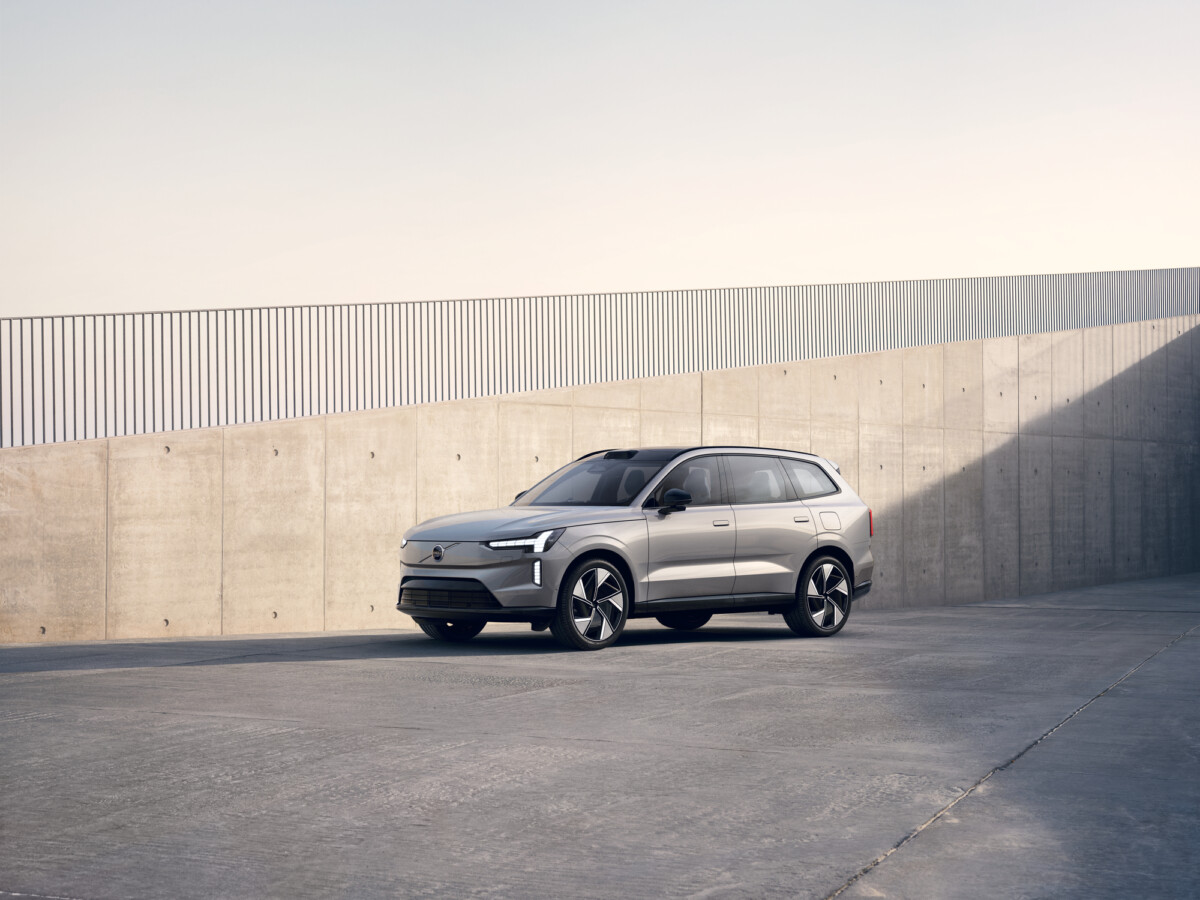
“The most complicated thing is understanding the driver’s intention”Mikael Ljung Aust, the senior safety technical leader at Volvo, explained to me. “The car can perceive a situation as dangerous, even though it is ultimately managed perfectly”he explains to me.
Before continuing: “if the car takes control in this situation, the driver will neither understand nor appreciate the situation, and will tend to have less trust in the systems, which could be useful in cases where danger is proven”.
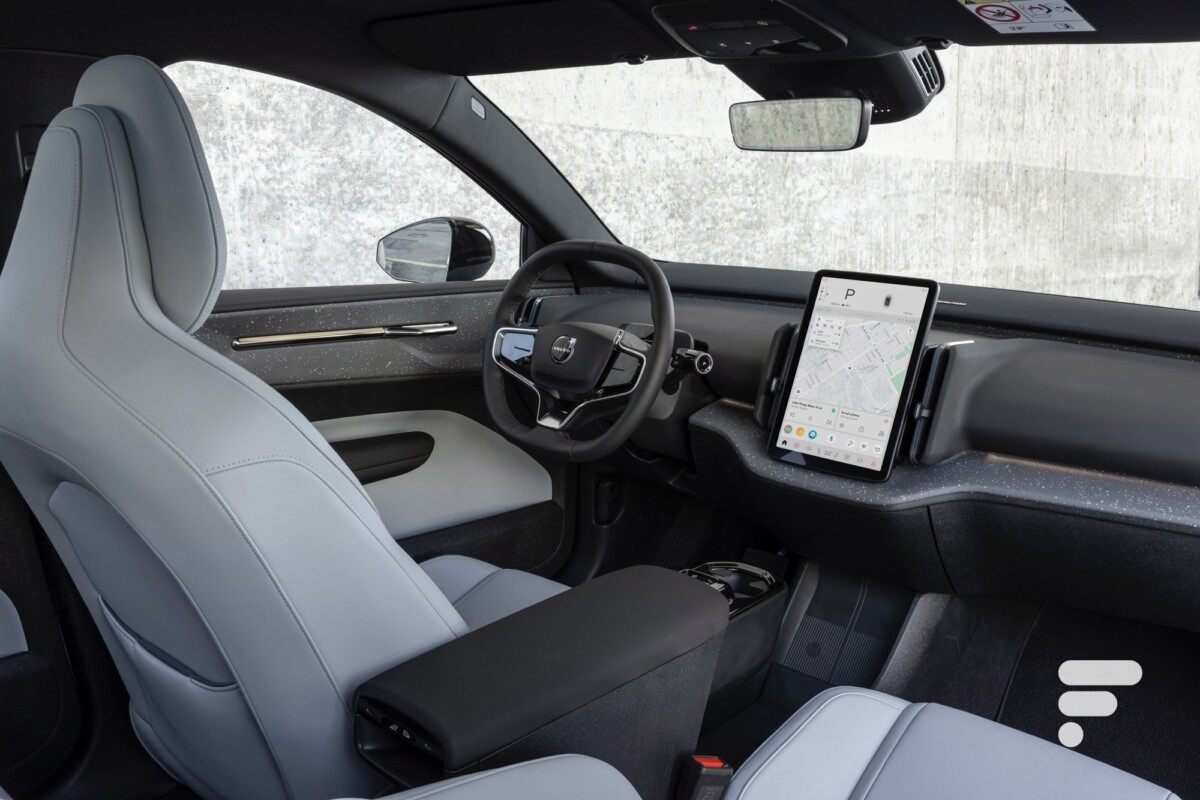
A real headache, therefore, but which also includes another central subject: how to eliminate distractions while driving as much as possible.
Asked about the EX30, almost all of the functions and controls of which are grouped together on the central touch screen, Mikael told me that “the interface is governed by strict rules: each function must be within seven steps of each other, and three clicks must be completed in less than 1.30 seconds”. A challenge which does not yet seem to have been fully realized, if we refer to our essay.
Step 2: Deal with the accident
However, despite all possible and imaginable precautions, accidents sometimes happen. If, from an outside perspective, everything happens in the blink of an eye (quite literally), a whole strategy is put in place to protect the occupants.
To understand the key to a successful accident, you have to go back to your physics classes. When an object is moving, it creates kinetic energy (proportional to its weight), which disappears when it comes to rest.
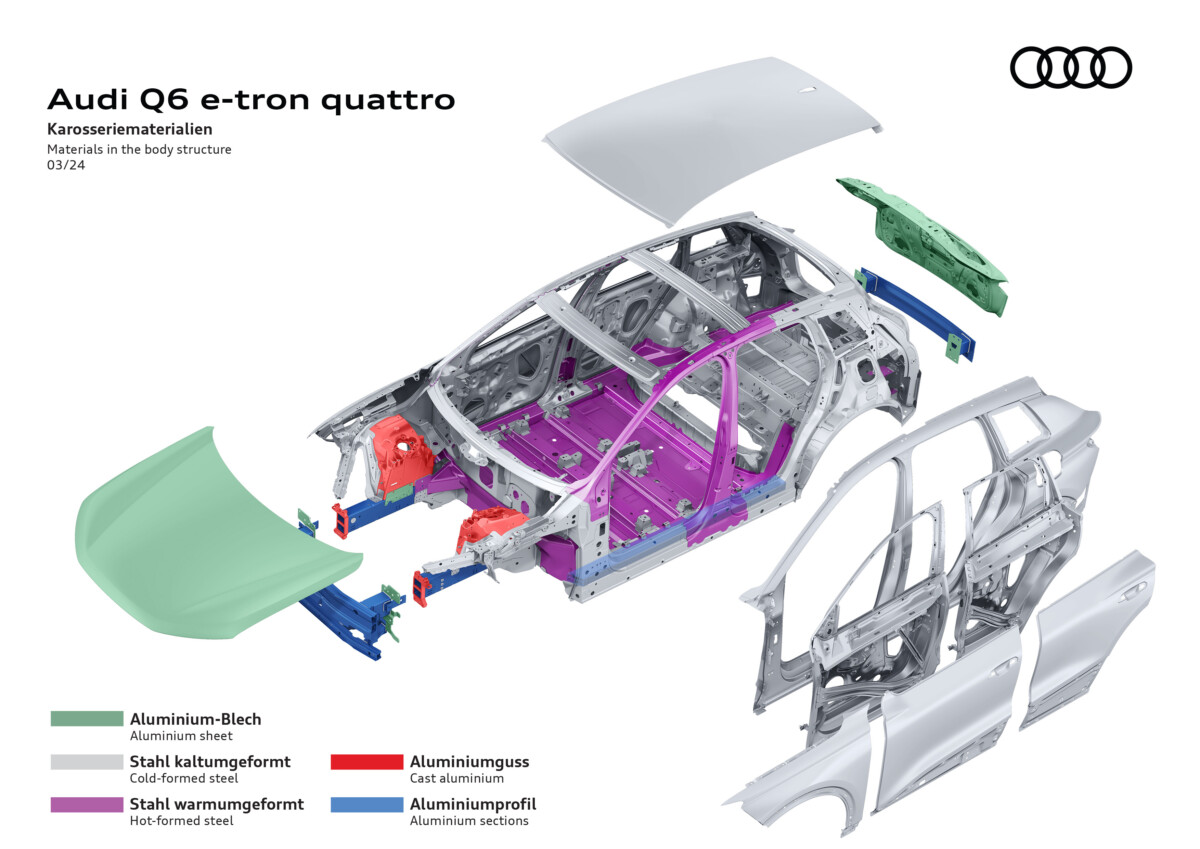
In the case of a car in normal conditions, this energy dissipation occurs through braking, both mechanical (via the brake calipers) and regenerative on hybrid and electric engines.
In the event of a crash, this energy must be dissipated in another way. The structure of the car must obey a simple rule: deform so that the bodies of the passengers do not.

Obviously, nothing is left to chance. Everything is planned and calculated from the start of the car’s design, with a body made of different types of steel, each with its well-defined properties – the car must deform as much as possible, of course, but while maintaining a ” survival cell” capable of protecting occupants from intrusions.
Lotta Jakobsson, Senior Technical Specialist Injury Prevention at Volvo (quite a program), explains to me that it is necessary at all costs “limit the speed of movement of hard parts on the occupant”. For this, the stiffest steels will be placed in the appropriate places, but the airbags also play a crucial role.
Practice, an essential element
For crash tests, as for almost all contemporary activities, IT plays a determining role… but physical crash tests retain a particular importance – at least at Volvo, a brand historically associated with safety.
The brand estimates that, for a physical crash test, more than 140 virtual iterations are carried out, making it possible to test different structures in record time. The “real” crash, however, remains essential to validate the choices.
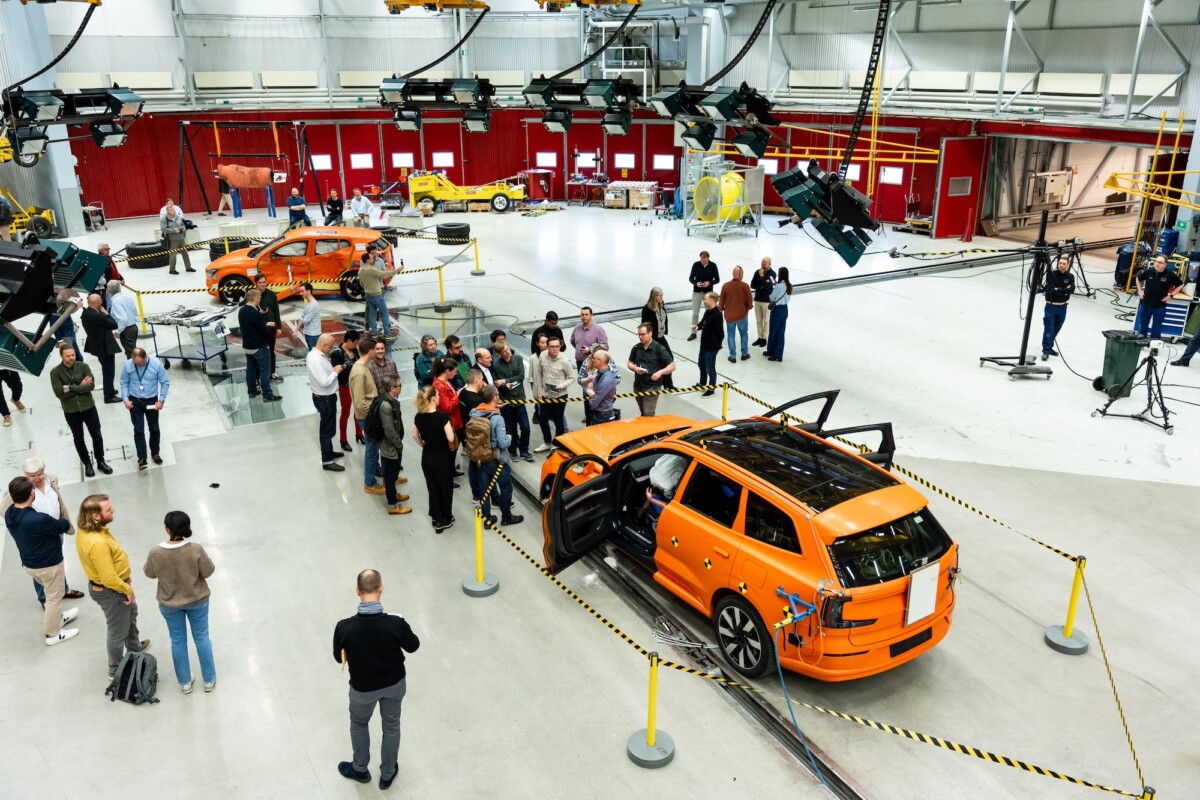
So here we are in the Safety Center Crash Lab, located in the brand’s historic factory in Torslanda, a suburb of Gothenburg. A center inaugurated in 2000 and still particularly advanced today, with two lanes, including a mobile one, allowing two vehicles (cars, but also heavy goods vehicles) to crash at varying degrees, all up to 120 km/h.
At the same time, an 850-ton block can move on air cushions to adapt to each situation: frontal or lateral impact, anything can happen. Surprisingly, the center can also send cars careening… outside, since it has “natural” obstacles (brick walls, rocks, ditches, etc.) to replicate as many “everyday life” situations as possible. in laboratory.
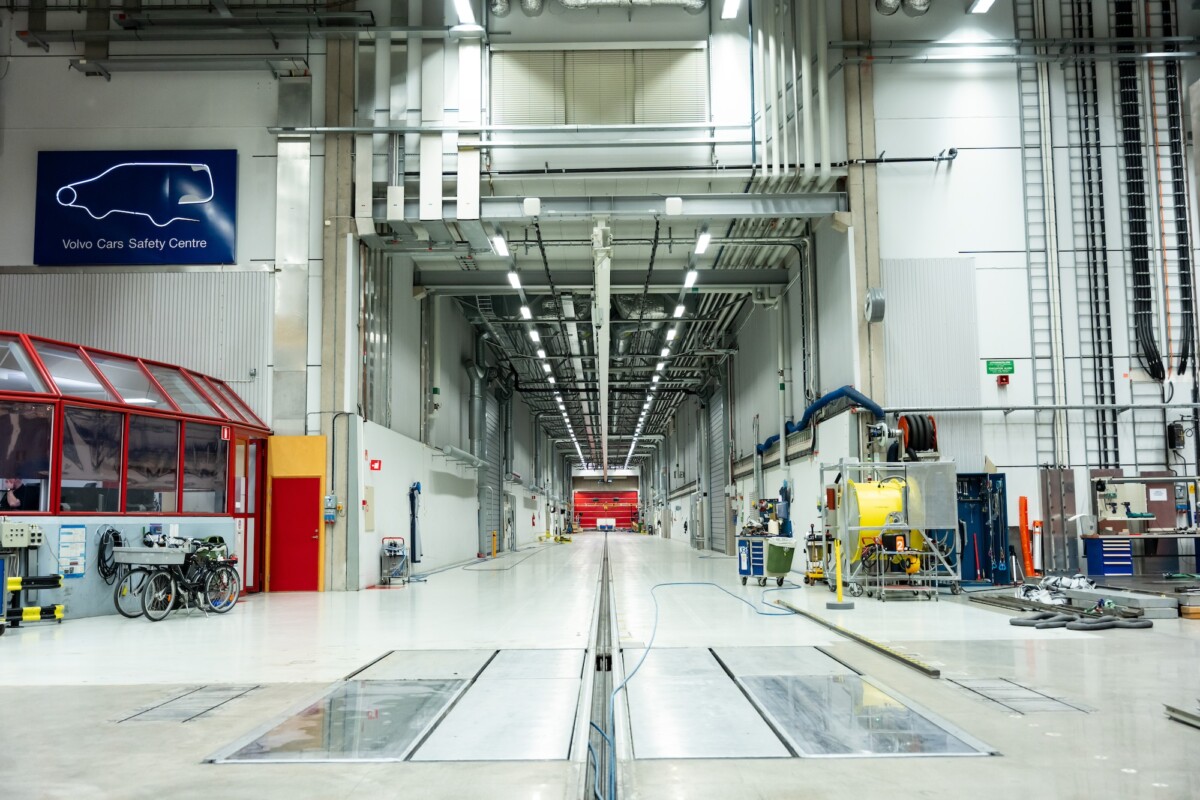
Let’s continue with the particularities: the center has a reindeer mannequin. Because yes, the reindeer (or other moose) is a formidable animal in the event of an accident, due to its high weight (up to 180 kg) and its very high center of gravity. According to Volvo, 80 people are seriously injured by these animals per year in Scandinavia!
Volvo also set up, in 1970, a team specially dedicated to the investigation of real accidents. To do this, it is able to go to the scene of accidents involving a Volvo within a one-hour drive radius of the Safety Center, in order to gather valuable information on real conditions.
This is what you find on a PDF file. Let’s now move on to practice: it’s time for the crash test!
A very concrete example
We are therefore going to witness a crash test between Volvo’s latest two electric cars. An EX90, a mammoth of 2.9 tonnes launched at 50 km/h, will collide sideways with an EX30, the smallest Volvo SUV (2.04 tonnes all the same), traveling at 20 km/h – “a very common situation in an accident at an intersection”explains Lotta Jakobsson.
Here is the result in video:
In the EX30, two dummies are placed on the accident side – one behind the wheel and one behind. Interestingly enough: these mannequins represent small women, illustrating Volvo’s desire to offer safe cars for everyone.
In the EX90, three occupants: two in the front (a small female model at the wheel, another medium-sized man on the passenger side) and a three-year-old baby in the rear, installed in a rear-facing child seat. the road.
The accident itself is stealthy: everything happens in a handful of milliseconds. The condition of the cars is impressive: if the EX90 almost seems to be able to start again, the side of the poor EX30 is in a bad state. Volvo is reassuring: the five dummies are in good condition, and the “measurements indicate that there would probably not have been serious injuries”.
What are the specificities of an electric car in the event of an accident?
Following this demonstration, I went to see Lotta Jakobsson again, in order to understand how an electric car behaves in a crash compared to a thermal car.
“There’s not that much difference”she explains to me, before continuing: “the principle remains the same: distribute and absorb forces optimally throughout the car, and interact as best as possible with the other elements of the impact”.

The fact remains that the electric car differs from a thermal model on particular and very specific points. The first: weight, synonymous with additional kinetic energy – and therefore constraints.
For this, Ms. Jakobsson explains to me that several strategies are put in place, in particular a deformation zone before “on three levels, interconnected”allowing “to homogenize the contact zones”and even “push the car or object you are entering in order to dissipate additional energy”.

Source: Volvo

Source: Volvo
Concerning the battery, there is only one watchword: maximum safety. Ten milliseconds after the start of the impact, the high voltage system is tripped, in order to prevent any case of short circuit. As for the battery itself, it is surrounded by a super rigid frame, guaranteeing its good performance in all circumstances.
A frame that makes the car more rigid, particularly in the event of a side impact. For that, “the engineering had to adapt, and the distribution of the different steels in the doors, pillars and roofs was modified compared to a thermal car”Lotta Jakobsson always explains to me.
Ever safer cars
You will have understood: electric car or not, safety remains a determining role in the development of a new model – at Volvo as with other manufacturers.

100% electric motors have, as we have seen, very specific characteristics, both in terms of weight and structure; constraints which have all been studied to guarantee a maximum level of safety for the occupants of the car, of course, but also for other road users.
Let’s keep in mind the most important thing: the best accident is the one that doesn’t happen. Be careful, then!
